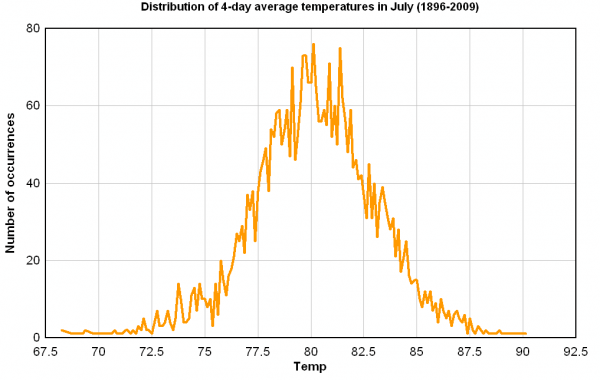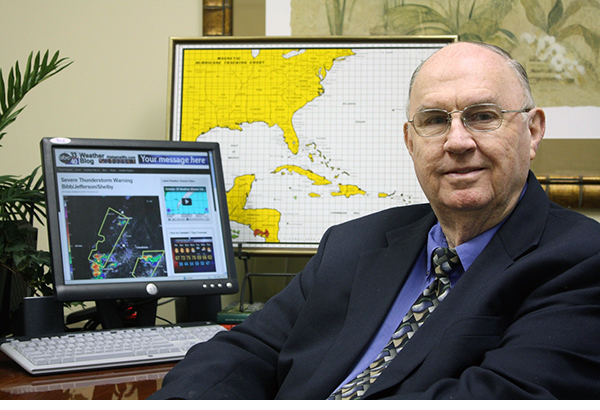Coolest July weather in a long time
With the latest cool snap in Alabama, we’ve experienced some of the coolest July temperatures in a long time. Several record lows have been broken or tied, see Brian Peters’ post below. And, many places in NE Alabama dropped into the lower 50s or even the upper 40s. However, record lows on a single date nor lows in cold spots, many without long climate records, do not tell the full story. Often, a record low is an isolated occurrence; we get a quick period of cool air, one or maybe two record lows, then it warms back up. In this case, the cool weather (about 10 degrees below normal) has persisted for 4 days in the middle of July, an extremely rare occurrence.
Even using high and low temperatures at the BHM Airport, with their heat island warm bias (some day I hope to get a chance to research the “intensity” of a heat island, in degrees change comapred to the surrounding rural areas, versus its size), this has been a remarkable cool snap.
The lows at BHM the past 4 mornings have been 61, 61, 59, and 61. This provides an average 4-day low of 60.5. This is the 27th coolest 4-night period in July in Birmingham climate history (back to 1896). Including the daytime temperatures along with the lows to find an average temperature for each entire 24-hour period, the past 4 days have been 72, 71, 71, and 71, for a 4-day average temperature of 71.25. This is the 18th coolest 4-day period in July in BHM since 1896, and the coolest since July 9, 1972.
For math people out there, the past 4-days ranks in the 99.2 percentile for cool nights in July, and in the 99.5 percentile for overall cool temperatures in July. This means only 0.5 percent, or 1 of every 200 4-day periods in July, is as cool as the past 4 days. Overall temperatures in July (highs and lows) are very close to a normal distribution, with an average of 80.125 and a standard deviation of 3 degrees. Standard deviation gives you an idea of how much the temperatures in a given month typically vary. In the summer, it usually doesn’t vary too far from the average. This is compared to the winter, when big temperature swings are common. The standard deviation of 4-day temperatures in December and January is 8.5 degrees.
Category: Pre-November 2010 Posts
















